Performance and Key Highlights of Bursa Malaysia Derivatives (BMD) Products in Q2 2020

Prepared By : Kenanga Futures Sdn Bhd
Q2 2020 Market Review
Global Highlights

1) COVID-19 Pandemic Continues And Economies Dragged Into Recession
- More economies globally began to reopen, resulting in recovery of many economic activities.
- However, COVID-19 infections continued to increase daily, and as at 30 June 2020, the total number of global COVID-19 cases has surpassed the 10 million mark and the virus has caused more than five hundred thousand deaths.
- As the vaccine has yet to be found, lockdown measures enforced by many countries had stalled global economic growth which increased the chances of a major global recession.
- World Bank, in its June 2020 Global Economic Prospects report, expected a 5.2 percent contraction in global GDP in 2020, resulting in the deepest global recession in decades.
- In other news, the world largest economy in the world, United States of America (USA), is now the country with most COVID-19 infections in the world.
- According to US Commerce Department, US economy shrank at an annual rate of 5% in the first quarter of this year which is bigger than expected by many analysts.
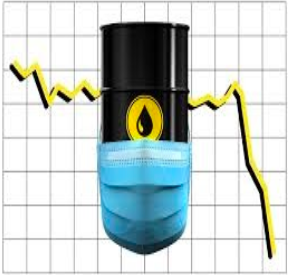
2) Negative Oil Prices For The First Time Ever
- For the first time in history, the price of a barrel of benchmark US oil, or better known as West Texas Intermediate (WTI), turned negative on Monday, 20 April 2020.
- The price of a barrel of WTI crashed 300 percent from USD17.85 per barrel to negative USD37.63 per barrel.
- Analysts described that the massive drop in oil price did not necessarily mean a price crash in retail fuel as the crash was driven in part by a technicality of the oil market.
- Technically, traders who hold the contracts did not want to take the delivery of oil and incur storage costs, and thus offloaded their holdings causing a major crash.
- At the same time, a major sell-off of U.S. Oil Fund (USO) which was mandated to track the price in the most active WTI contract occurred. The fund is popular with retail investors.The prices began to fell massively when USO decided to sell their May futures contract as part of the rollover to buy the June and July contracts.
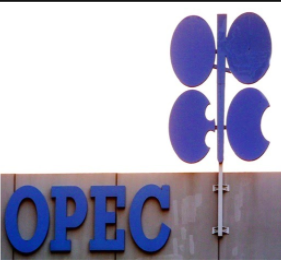
3) OPEC+ Agrees To Production Cut
- A month after a price war between the two major oil producers, the crude oil market was calmed as OPEC and its allies agreed to a production cut in April 2020.
- The group, called OPEC+ that is led by Saudi Arabia and Russia, had agreed to cut 9.7 million barrels per day that would last into May and June before committing to 7.7 million barrels per day reduction for the rest of the year.
- The record size of the cut was taken to combat the drop in global crude demand amid the COVID-19 pandemic.
- Entering next year, the group agreed to 5.8 million barrels per day cut from January through April 2022 before meeting again on 10 June 2021 to determine the next necessary action.
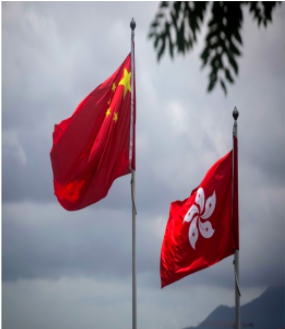
4) The Imposition of China Security Law On Hong Kong
- A year after protest in major city of Hong Kong, the political crisis in the region named the Pearl of the Orient escalated into new heights when mainland China decided to impose a sweeping national security law on Hong Kong.
- The law which consists of 66 articles will be enacted to punish the crimes of secession, subversion, terrorism and collusion with foreign forces by up to life in prison.
- Other than that, the law will also allow the mainland China to set up a national security office in Hong Kong to collect intelligence and handle crimes against national security.
- The move has prompted concerns inside and outside of the city with thousands of protesters returning to the streets to demonstrate their anger towards the decision.
- Outside of Hong Kong, major countries has strongly criticised the move. US had already begun to remove Hong Kong’s special status under United States-Hong Kong Policy Act of 1992.
Malaysia Highlights
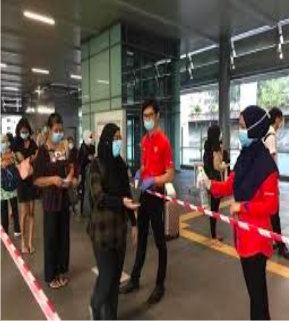
1) The Extension of Movement Control Order in Malaysia
- The first Movement Control Order, which initially lasted on 14 April 2020 before extended until 28 April, was further extended in the second quarter of the year until 12 May as the outbreak shows no sign of control.
- After showing some positive results where the daily cases had successfully reduced to double digits, the country moved into Conditional Movement Control Order (CMCO) that ran from 13 May until 9 June.
- Under CMCO, most economic sectors and commercial activities in the country resumed operations and interstate travel was allowed only for work purposes.
- On 7 June, the Prime Minister announced that the Recovery Movement Control Order (RMCO) will be initiated on 10 June, and will run until 31 August 2020.
- Under RMCO, more economies are allowed to reopen, while interstate travel is permissible for all which will open doors for domestic tourism.
- However, international travel is still prohibited as the country’s border are still be shut.

2) The Fourth Economic Stimulus Package by Malaysian Government PENJANA
- As Malaysia is now entering the recovery phase of the COVID-19 pandemic, Malaysia government unveiled its fourth economic stimulus package known as PENJANA.
- The package, valued at RM35 billion, consists of 40 initiatives with three (3) key thrusts which are to “empower people, propel the businesses and stimulate the economy.”
- Among the key highlights of the package are new tax incentives, financial assistance for small and medium-sized businesses (SMEs) and job protection initiatives.
- With this latest stimulus package, Malaysia has now issued over RM 290 billion worth of incentives since February 2020.

3) Malaysian Economic Performance Q1 2020
- Despite challenges brought by global uncertainties, Malaysia’s economic performance in the first quarter of this year had surprised economists and analysts as it recorded growth.
- The gross domestic product (GDP) of the country grew 0.7 percent in the first quarter of 2020 from a year earlier, beating the 1.5 percent decline forecast in a Reuters poll.
- Bank Negara Malaysia (BNM) cited that the slow growth in the first three months of the year was mainly due to the implementation of Movement Control Order (MCO) which has curtailed many major economic activities.
- BNM governor, Datuk Nor Shamsiah Mohd Yunus, also expected the local economy to post a deep contraction in the second quarter of this year before recovering in the second half of this year.
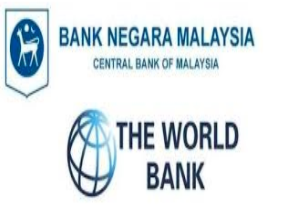
4) Malaysia’s Economic Outlook in 2020
- In its Economic and Monetary Review 2019, BNM has forecasted that the Malaysia’s economic growth to be between -2% to 0.5% in 2020.
- Compared to 4.3% growth registered in 2019, the central bank cited that the domestic economy will be largely affected by the COVID-19 pandemic and a volatile shifts in crude oil prices as well as continued supply disruption in the commodities sector.
- Meanwhile, the World Bank and International Monetary Fund (IMF) has revised their 2020 Malaysia economic forecasts due to impact of the outbreak.
- The World Bank in its June 2020 Malaysia Economic Monitor expected Malaysia’s GDP to contract by 3.1% in 2020 while IMF in its June 2020 World Economic Outlook Update report revised Malaysia’s GDP to a 3.8% contraction in 2020.
Source : Bloomberg, Reuters, The Edge, Washington Post and The Star
Overall BMD Performance Q2 2020
No of Trading Days
Q2 2020 : 60
Q1 2020 : 64
Q2 2019 : 61
QoQ Performance
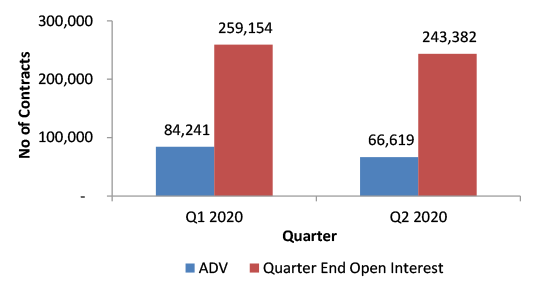
- On QoQ comparison, the ADV for overall BMD products dropped around 21% from 84,241 contracts in the first quarter of this year to 66,619 contracts in the second quarter of this year.
- Meanwhile, the quarter end open interest for overall BMD products fell slightly 6% from 259,154 contracts in Q1 2020 to 243,382 contracts.
YoY Performance
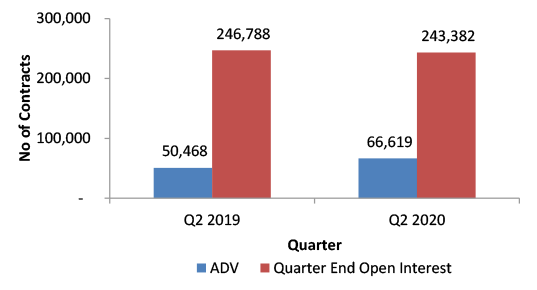
- The overall BMD products has successfully recorded a 32% growth in its ADV when YoY comparison was made, as the number of contracts has increased from 50,468 contracts in the second quarter last year to 66,619 contracts in the second quarter of this year.
- Nevertheless, the quarter end open interest dropped marginally by 1% from 246,788 contracts in Q2 2019 to 243,382 contracts in Q2 2020.
Source : Bursa Malaysia Website
Overall BMD Market Demography Q2 2020

Review:
- Foreign institutions remained to be the largest participants in the overall BMD market, maintaining its participation rate above 40%.
- Like the previous quarters, domestic retail participants maintained its second largest market participant spot for the overall BMD market with the participation rate range of 26% to 31%.
- Meanwhile, local participants retained its position as the third largest participant in the overall BMD market, the position that they seized from domestic institution since February this year, with market share between 15% and 18%.
- Domestic institution was in the fourth position in terms of market share with participation rate hovering around 9% to 10%.
FCPO Performance Q2 2020
No of Trading Days
Q2 2020 : 60
Q1 2020 : 64
Q2 2019 : 61
QoQ Performance
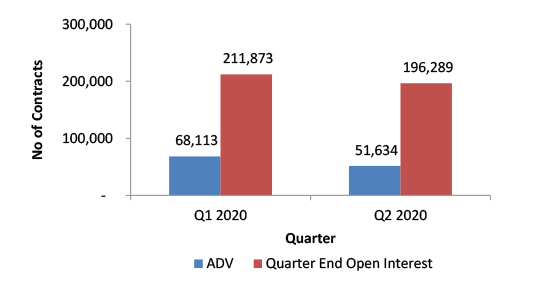
- Like overall BMD products’ performance, FCPO recorded contraction in both ADV and quarter end open interest on QoQ perspective.
- The ADV for FCPO contracts dropped 24% from 68,113 contracts in Q1 2020 to 51,634 contracts in Q2 2020.
- On quarter end open interest, the number of contracts for FCPO fell 7% from 211,873 contracts in Q1 2020 to 196,289 contracts in Q2 2020.
YoY Performance
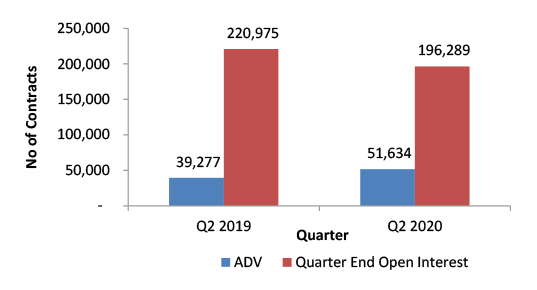
- On YoY front, the ADV for FCPO contracts grew 31% from 39,277 contracts in Q2 2019 to 51,634 contracts in Q2 2020.
- However, for quarter end open interest, the number of contracts slipped 11% from 220,975 contracts in second quarter last quarter to 196,289 contracts in the second quarter this year.
Source : Bursa Malaysia website
FCPO Q2 2020 Price Performance
Snapshot of FCPO Performance
Price as at 30/06/2020 (Last trading day)
: 2,297
Quarter High
: 2,472
(19/06/2020)
Quarter Low
: 1,946
(06/05/2020)
Q2 2020 Performance
(% Change)
: -1.80
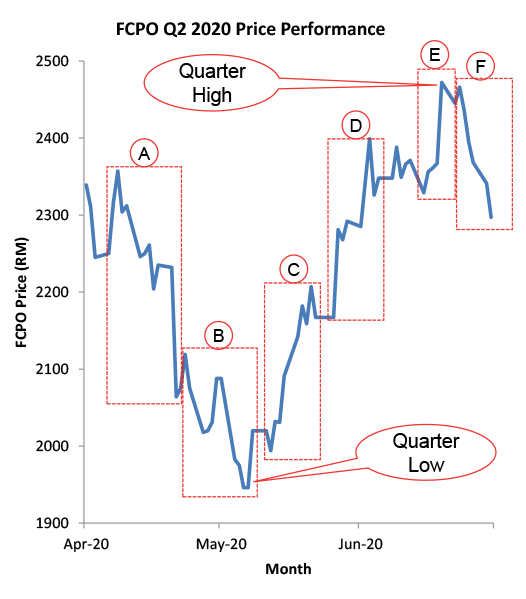
|
Period |
Remarks |
|---|---|
| A |
8 Apr 20 – 21 Apr 20 (-12.43%) FCPO in a downward trend following the bearish MPOB palm oil production and inventory figures in March and tracking the negative prices recorded in benchmark US oil prices for the first time in history. |
|
B |
23 Apr 20 – 7 May 20 (-8.16%) The local palm oil market dropped to its YTD lowest level due to the anticipation of lower palm oil demand as major palm oil buyers like India and China enforced lockdown measures in their countries and renewed trade tensions between US and China after US President Donald Trump threatened to raise tariffs. |
|
C |
12 May 20 – 21 May 20 (+10.68%) FCPO in an uptrend movement driven by anticipation of demand revival as more countries started to reopen their economies, Malaysian government’s latest decision to slash its palm oil export duty to zero for June and Indonesia’s plan to maintain their biodiesel programme |
|
D |
26 May 20 – 3 Jun 20 (+10.71%) FCPO in a bullish momentum due to the resumption of palm oil purchases by top buyer India and expectation of lower May production |
|
E |
15 Jun 20 – 22 Jun 20 (+4.98%) FCPO surged to its highest level in the quarter, supported by the rising export figures for the first 20 days of June and tracking the jump in crude oil prices due to commitment between OPEC and its allies to cut production. |
|
F |
23 Jun 20 – 30 Jun 20 (-6.85%) FCPO dropped in the final week of June on bearish palm oil consumption outlook by analyst Thomas Mielke and tracking fears over second wave of COVID-19 infections. |
Source : Bloomberg and The Edge Market
FCPO Market Demography Q2 2020

Review:
- In Q2 2020, foreign institutions continued its domination in the Crude Palm Oil Futures market where the participation rate fell below 40% on April, before consistently making up 42% of the market share in May and June.
- Behind foreign institutions is domestic retail participant which successfully retained the second spot in terms of participanship in FCPO market, with participation rate range between 27% and 31%.
- Meanwhile, the third largest participant in the FCPO market for the second quarter of this year is local participants with participation rate range between 17% and 19%.
- Domestic institutions remained the fourth largest participants in the FCPO market in Q2 2020 with participation rate range between 11% and 12%.
Source : Bursa Malaysia Website
FKLI Performance Q2 2020
No of Trading Days
Q2 2020 : 60
Q1 2020 : 64
Q2 2019 : 61
QoQ Performance
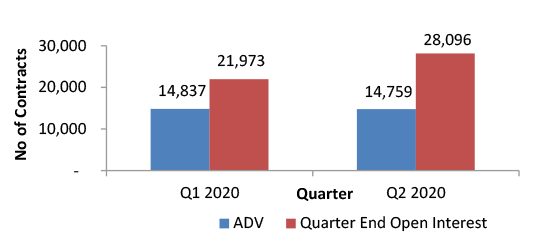
- Unlike FCPO contracts, FKLI performed relatively well in both ADV and quarter end open interest on QoQ basis.
- The ADV fell slightly by 1% from 14,837 contracts in Q1 2020 to 14,759 contracts in Q2 2020.
- Meanwhile, the quarter end open interest for FKLI contracts grew 28% from 21,973 contracts in Q1 2020 to 28,096 contracts in Q2 2020.
YoY Performance
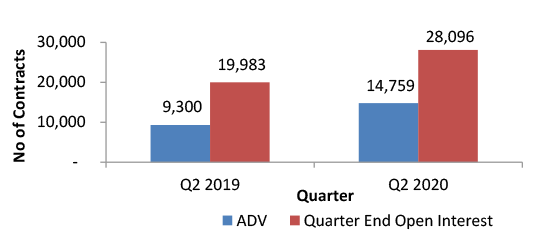
- On YoY basis, both ADV and quarter end open interest for FKLI contracts expanded.
- In terms of ADV, the number of contracts improved 59% from 9,300 contracts in Q2 2019 to 14,759 contracts in Q2 2020.
- Meanwhile, quarter end open interest grew 41% from 19,983 contracts in Q2 2019 to 28,096 contracts in Q2 2020.
Spread between FKLI and FBMKLCI
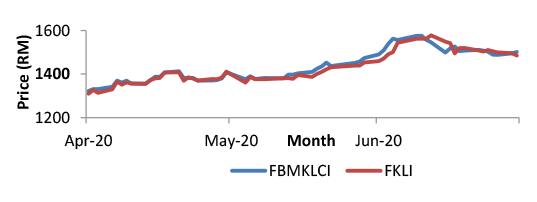
- Widest Premium : +17.15 (03/04/2020)
- Widest Discount : -6.84 (27/04/2020)
Source : Bursa Malaysia Website and Bloomberg
FKLI Q2 2020 Price Performance
Snapshot of FKLI Performance
Price as at 30/06/2020 (Last trading day)
: 1,503
Quarter High
: 1,577
(10/06/2020)
Quarter Low
: 1,309.5
(01/04/2020)
Q2 2020 Performance
(% Change)
: +14.78
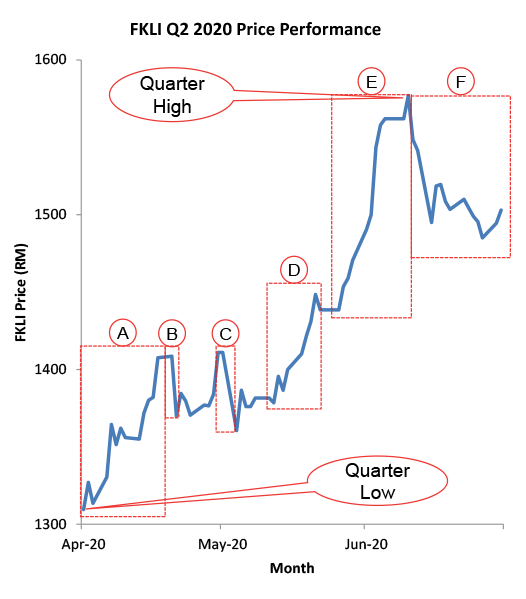
|
Period |
Remarks |
|---|---|
| A |
1 Apr 20 – 17 Apr 20 (+7.48%) FKLI kicked off its second quarter with positive start in line with regional peers on sign of slowdown in global COVID-19 cases and tracking the additional RM10 billion assistance by Malaysian government at helping the small and medium enterprises. |
|
B |
20 Apr 20 – 21 Apr 20 (-2.73%) The local market suffered massive losses in its daily trading as Bursa’s energy index fell following the negative prices recorded in US crude oil futures for the first time in history |
|
C |
29 Apr 20 – 4 May 20 (-1.70%) Market dropped on signs of renewed trade tensions between US and China after US President Donald Trump threatened to raise tariffs on Chinese goods after accusing China as “accountable” for the spread of COVID-19. |
|
D |
12 May 20 – 21 May 20 (+5.08%) FKLI was in an uptrend due to a stronger-than-expected Q1 2020 GDP growth of 0.7% and a recovery in crude oil prices which has pushed the buying of Bursa Malaysia-listed oil and gas-related companies. |
|
E |
26 May 20 – 10 Jun 20 (+9.63%) FKLI continued its winning streak on the back of continuous rally in heavyweight glovemakers’ share price, while the market sentiment was also supported by the latest economic recovery plan by Malaysian government named as PENJANA |
|
F |
11 Jun 20 – 30 Jun 20 (-2.94%) Local market dropped in the second half of June on concerns over second wave of COVID-19 infections and tracking the gloomy Malaysia’s economic outlook by World Bank. |
Source : Bloomberg and The Edge Market
FKLI Market Demography Q2 2020

Review:
- Similar to FCPO market, foreign institutions are the largest market participants in the FKLI market for Q2 2020 where its market share was between 50% and 60%.
- Behind foreign institutions are the domestic retail and local participants which claimed the second and third largest participants respectively in the FKLI market.
- The participation rate range for domestic retail is 23% to 33%, while the participation rate range for local participants is 8% to 16%.
- Domestic institutions remained to be the fourth largest market participants in the FKLI market with the market share is only between 3% and 4%.
Source : Bursa Malaysia Website
Bursa Malaysia Derivatives Q2 2020 Highlights
1
FKLI Registered An All-time High Daily Volume In May 2020
- On 27 May 2020, the FTSE Bursa Malaysia KLCI Futures (FKLI) contract recorded an all-time high in its daily trading volume of 65,000 contracts.
- The new FKLI high trading volume has successfully surpassed the previous record of 61,429 contracts registered on 29 October 2019.
- According to Bursa Malaysia Derivatives’ chairman, the continuous increase in trading volume of FKLI is an indication of consistent growth in confidence in BMD’s products by market participants to manage their price risk exposure.
2
The Appointment of New Bursa Malaysia’s Chairman
- Following the resignation of Datuk Shireen Ann Zaharah Muhiudeen, Bursa Malaysia has appointed a new chairman to helm the company.
- Tan Sri Abdul Wahid Omar was appointed as the new non-executive chairman effective 1 May 2020
- Tan Sri Abdul Wahid, who previously chaired Malaysia’s largest fund management company Permodalan Nasional Bhd from August 2016 to June 2018, has extensive corporate experience leading major organisations in the areas of infrastructure development, telecommunications, financial services and investment management.
3
Additional COVID-19 Relief Measures by Bursa Malaysia
- Following the extension of Movement Control Order (MCO) in Malaysia, Bursa Malaysia had on 16 April 2020 announced additional temporary relief measures to aid and facilitate market participants.
- The additional measures are further extension of time for listed issuers to submit its financial statement, greater flexibility for fundraising through an increased general mandate limit for the new issue of securities and provided additional relief to ease compliance to its rules.
4
Suspension of Trading in the Contracts of FMG5
- After the suspension of FM70 contracts in last quarter, BMD has announced another suspension of trading in Malaysian Government Securities Futures Contract, or better known as FMG5.
- On its circular dated 29 May 2020, the suspension was exercised in conjunction with exercise taken by BMD to revamp the contract specifications of FMG5 with changes in settlement method from cash settlement to physical delivery.
Source : The Edge Market
Download full article here
Disclaimer:
The information contained in this material are derived from proprietary and non-proprietary sources deemed by Kenanga Futures Sdn Bhd to be reliable, are not necessarily all-inclusive and are not guaranteed as to accuracy. As such, no warranty of accuracy or reliability is given and no responsibility arising in any other way for errors and omissions (including responsibility to any person by reason of negligence) is accepted by Kenanga Futures Sdn Bhd, its officers, employees or agents.
This material may contain “forward-looking” information that is not purely historical in nature. Such information may include, among other things, projections and forecasts. There is no guarantee that any forecasts made will come to pass. Reliance upon information in this material is at the sole
discretion of the reader.
The information provided here is neither tax nor legal advice. Investors should speak to their tax professional for specific information regarding their tax situation. Trading in listed derivatives involves risk including possible loss of principal.
Prepared by Kenanga Futures Sdn Bhd, a Trading Participant of Bursa Malaysia Derivatives Berhad and a Clearing Participant of Bursa Malaysia Derivatives Clearing Berhad

